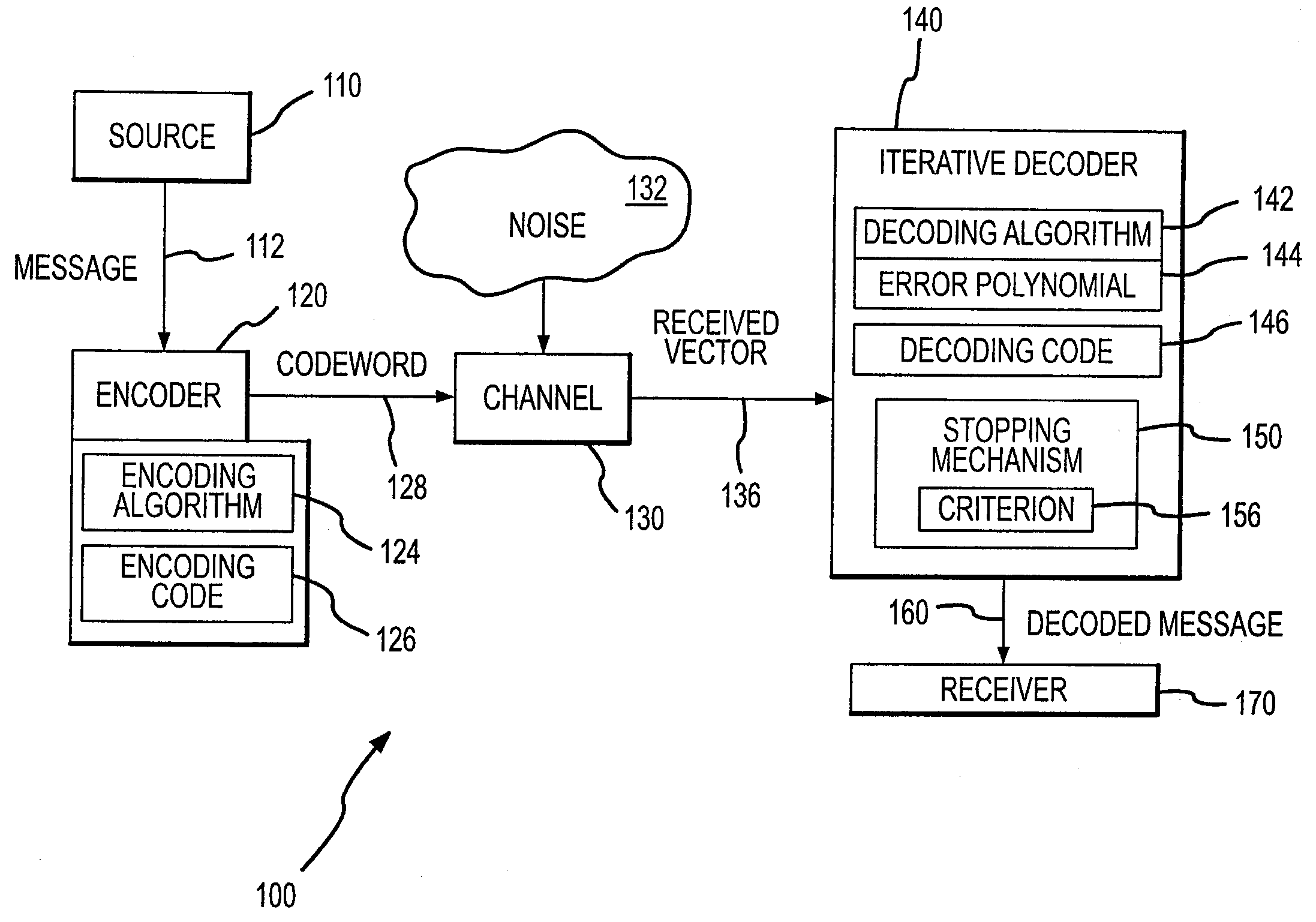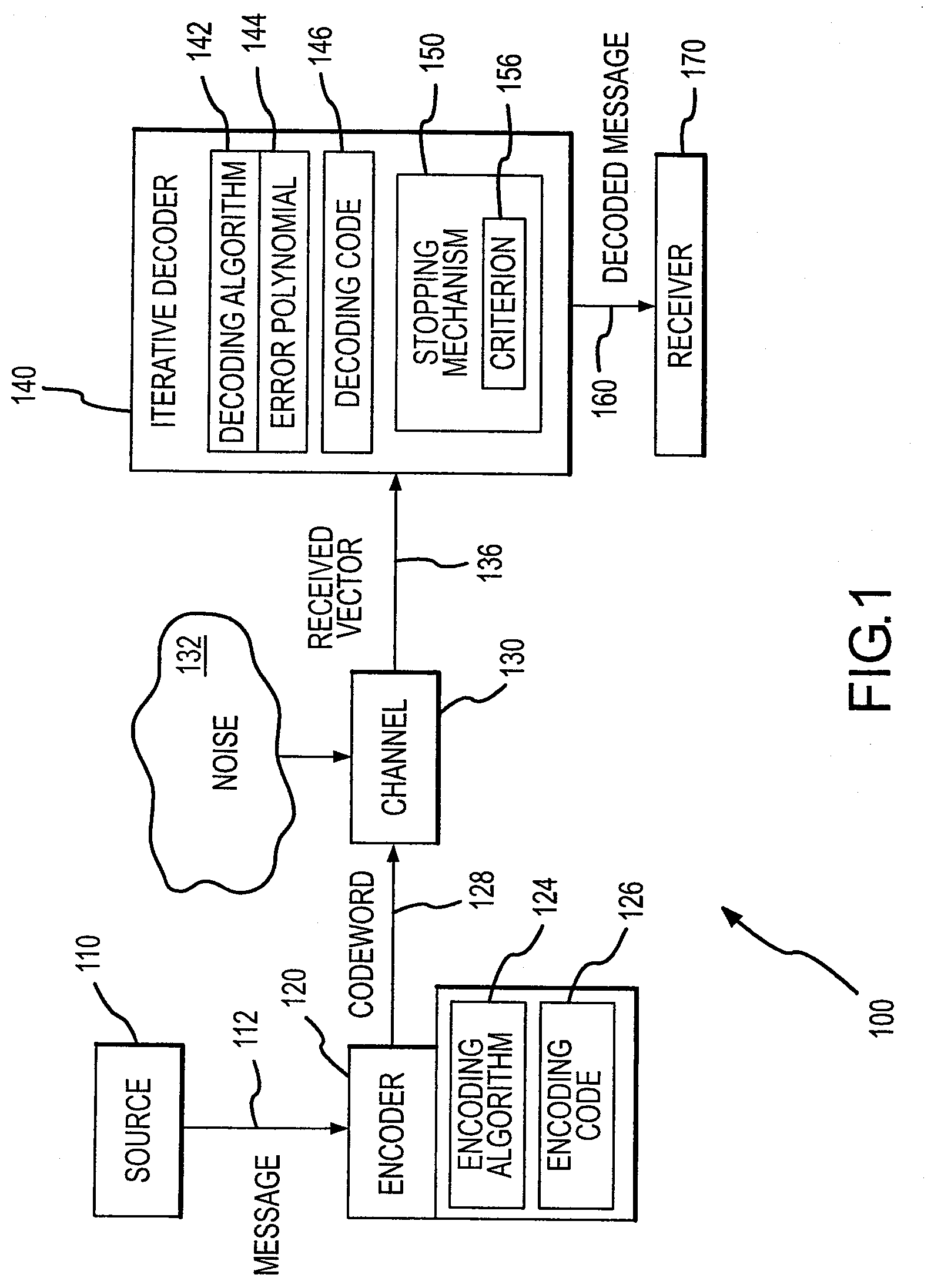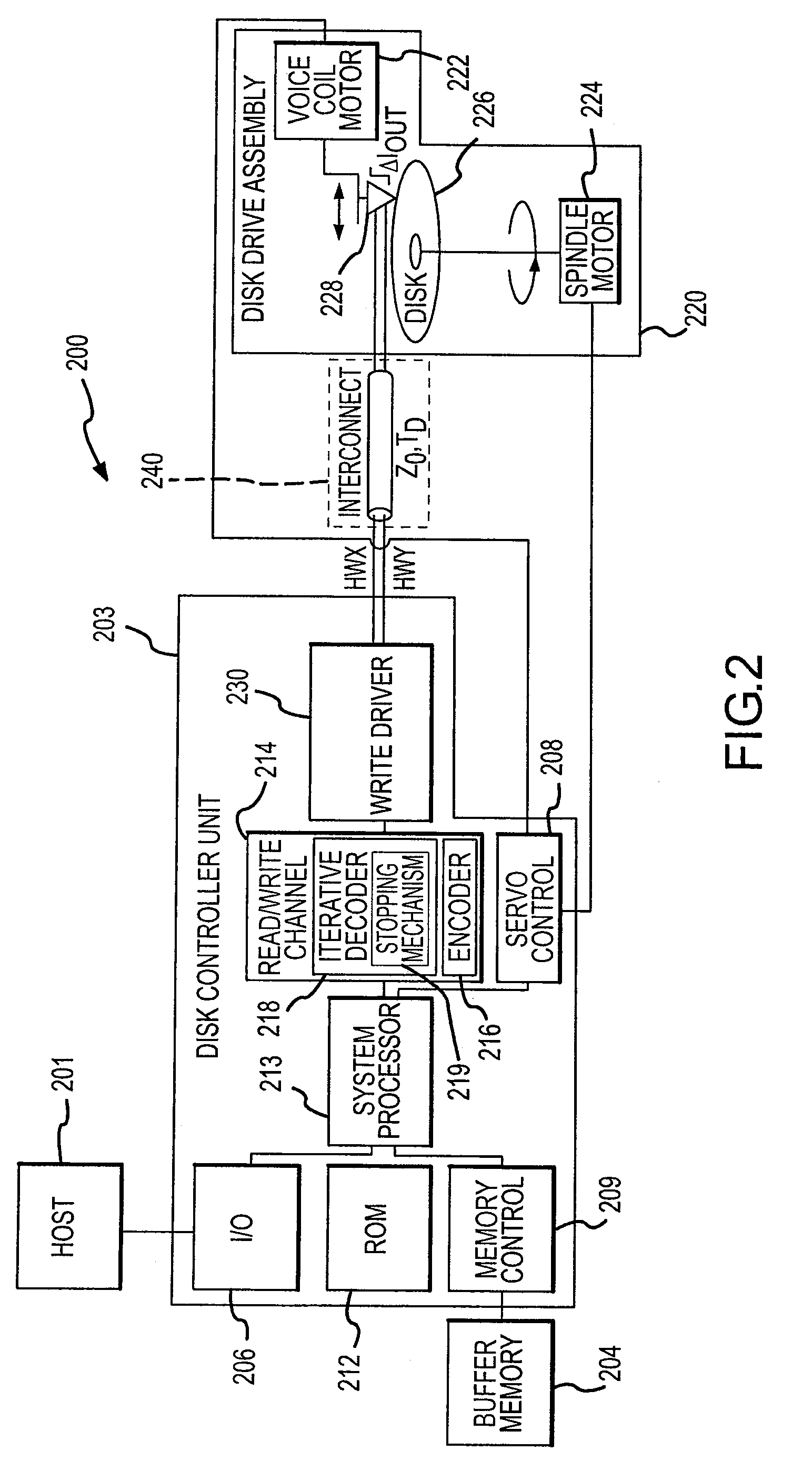Iterative decoder with stopping criterion generated from error location polynomial
a technology of error location and stop criterion, applied in the field of communication channel error correction codes with iterative error correction loops, can solve problems such as the production of error location polynomials, and achieve the effect of reducing the number of iterations and enhanced stop criterion
- Summary
- Abstract
- Description
- Claims
- Application Information
AI Technical Summary
Benefits of technology
Problems solved by technology
Method used
Image
Examples
Embodiment Construction
[0019]Briefly, the present invention is directed to an error correction method, and associated circuitry and devices, for use in decoders in communication channels such as read or read / write channel in a hard disk drive (HDD) system. In one embodiment, the inventive method and system uses partial results from an outer Reed-Solomon decoder module in a communication channel (e.g., HDD read channel) decoder to determine if the decoder reiterates a decoding operation. The inventors have determined that a decoder that performs a maximum of 3 decoding iterations only performs on average less than about 1.1 iterations when implementing the stopping criterion of the present invention. Accordingly, only 1 in 10 sectors require 2 iterations and only 1 in 500,000 sectors of a hard disk require 3 iterations. Using a combination of queuing theory and stochastic analysis, a feasible hardware implementation of the iterative error correction method can be provided in a decoder system or device (suc...
PUM
 Login to View More
Login to View More Abstract
Description
Claims
Application Information
 Login to View More
Login to View More - R&D
- Intellectual Property
- Life Sciences
- Materials
- Tech Scout
- Unparalleled Data Quality
- Higher Quality Content
- 60% Fewer Hallucinations
Browse by: Latest US Patents, China's latest patents, Technical Efficacy Thesaurus, Application Domain, Technology Topic, Popular Technical Reports.
© 2025 PatSnap. All rights reserved.Legal|Privacy policy|Modern Slavery Act Transparency Statement|Sitemap|About US| Contact US: help@patsnap.com



